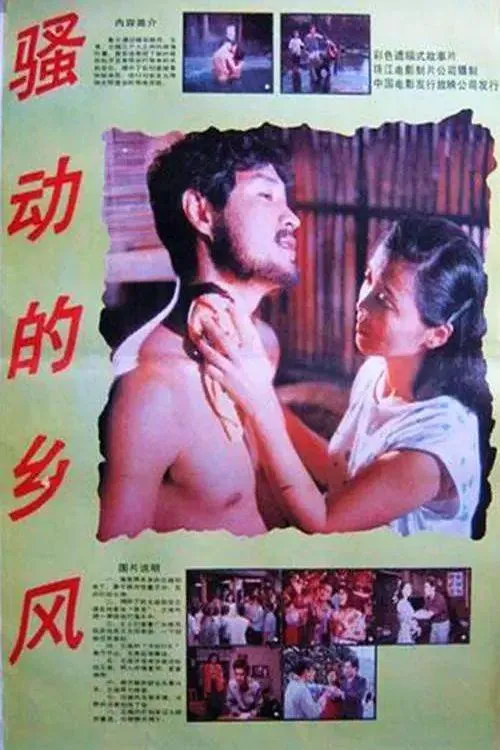The Rough Countryside Wind

Plot
The Rough Countryside Wind, a 2018 Chinese film directed by Li Ruijun, presents a poignant portrayal of the struggles faced by rural dwellers in modern China. The narrative centers around the lives of three women – Ajiya, a widow who raises two children; Lala, a young pregnant woman married to a migrant worker; and Qitie, an elderly woman whose husband has abandoned her. These three women find themselves entwined in a web of love, loss, and struggle, amidst the harsh realities of rural poverty. The story begins with Ajiya, who toils tirelessly in the fields, working from dawn to dusk to make ends meet and provide for her two children. Her daily routine is filled with physical labor, as she tends to her crops, raises her animals, and manages the household chores. Ajiya's life takes a turn when her children fall ill, and she must navigate the complexities of healthcare in rural China, where resources are scarce and bureaucratic hurdles are numerous. In a stark contrast, Lala, a young woman, shares her story with a haunting air of vulnerability. Married to a migrant worker who toils in the cities, Lala finds herself struggling to cope with pregnancy and the absence of her husband. Her struggles are compounded by the challenges of rural healthcare, as she faces difficulties in accessing essential medical care during her pregnancy. The migrant worker's periodic returns and eventual departure, leaving Lala alone and pregnant, highlight the harsh realities of the migrant labor system in China. Qitie, an elderly woman, has lived a life marked by love and abandonment. Her husband's departure has left her alone, struggling to make ends meet and find meaning in her life. Qitie's story serves as a poignant reminder of the countless women who have been left behind by their migrant husbands, often with little support or resources. Throughout the film, Li Ruijun employs a lyrical narrative style, allowing the audience to experience the lives of these women through a series of vignettes and fragmented sequences. The cinematography is breathtaking, capturing the beauty of the rural landscape, juxtaposed with the harsh realities of poverty and isolation. The soundtrack, consisting of traditional folk songs, weaves together a sense of nostalgia and longing, further emphasizing the emotional depth of the narrative. One of the primary themes of The Rough Countryside Wind is the struggle for survival in rural China. Ajiya, Lala, and Qitie's stories serve as harrowing illustrations of the difficulties faced by rural dwellers, caught between the constraints of poverty, isolation, and inadequate access to resources. The film highlights the lack of support systems, inadequate social services, and the overwhelming burden of responsibility that falls on women in rural areas. Furthermore, the film underscores the complexities of China's migrant labor system, which has created a vast network of temporary workers, separated from their families and communities. Lala's story serves as a powerful critique of this system, which allows migrant workers to abandon their spouses, leaving them to fend for themselves while the husbands accumulate wealth and status in the cities. The Rough Countryside Wind is also a powerful tribute to the resilience and courage of rural women, who continue to toil in silence, often against impossible odds. Through the stories of Ajiya, Lala, and Qitie, the film humanizes the struggles of rural poverty, elevating the voices of women who are often overlooked and marginalized. Ultimately, the film presents a nuanced portrayal of life in rural China, a testament to the strength and determination of women who persevere in the face of adversity.
Reviews
Recommendations



